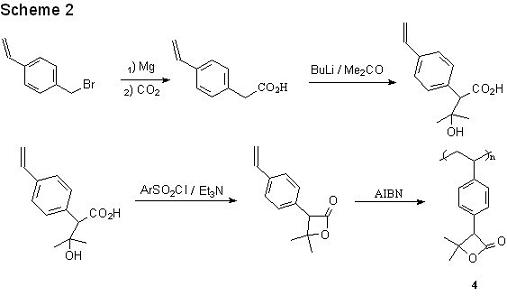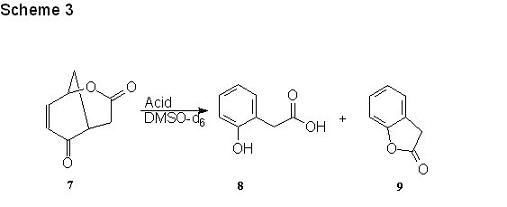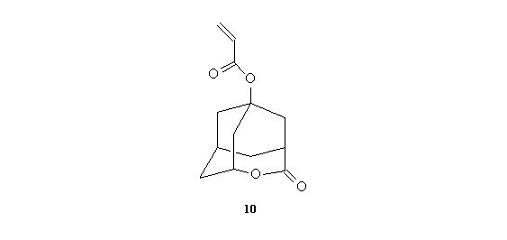|
|
||
|
Development
of 157 Photoresist Materials
The purpose of this document is to provide timely public access to the 157 nm resist development work being done in our laboratories under contract from International SEMATECH. It is our goal and SEMATECH's goal to disseminate this information as rapidly and widely as possible in hope that doing so will accelerate the availability of 157 nm resist materials to the members of International SEMATECH. Development of Mass Persistent PhotoresistsCurrent chemically amplified photoresists being used today are designed to lose mass upon reaction. This loss of mass occurs during the deprotection of the polymer with acid to yield an aqueous base soluble functional group. The mass that is lost during the lithography process is problematic for several reasons. The most important problem is the products formed during the deprotection of the polymer are volatile and these gases can potentially ruin the optical properties of the lenses. While this is a concern at 248 nm and 193 nm lithography it has proven to be a significant problem at 157 nm lithography. To overcome this problem the design of a resist that will function without the loss of mass is being sought. The first goal of the project is to find a system that will work at either 248nm or 193nm photolithography and then tailor the system for use at 157nm photolithography. One current effort towards a mass persistent resist uses a b-lactone as the protecting group that will provide the necessary solubility switch. When treated with acid, b-lactone (11) opens up to form two products (2,3) that have a base soluble carboxylic acid functional group (scheme 1). 
A polymer (4) was synthesized based on model compound 1 (scheme 2). 
Lithographic evaluation of 4 produced a negative tone image. The negative tone image is believed to be the result of cross-linking from the double bonds in compounds 2 and 3. A current effort in the mass persistent project is to synthesize and test monomers/polymers that will not cross-link. The primary approach to prevent cross-linking is to add steric bulk to the monomer. It is proposed that once the ring is opened the resulting double bonds will be too sterically hindered to polymerize which would effectively inhibit cross-linking. Compounds 5 and 6 shown below have been synthesized and are currently being evaluated to see if they will ring open when treated with acid to give analogous products to compounds 2 and 3. 
A second protecting group being investigated for use in a mass persistent resist is the bicyclic lactone (7). Compound 7 has been synthesized and when treated with acid reacts to form two products (8,9) (scheme 3). 
Compound 8 has the necessary base soluble functional groups. In this case 8 has two base soluble functional groups present, a phenol and a carboxylic acid group. Compound 9 does not have any base soluble functional group and is a side product resulting from a rearrangement. Currently the synthesis of a polymer based on the structure of 7 is underway, which will be used in lithographic evaluations. A third compound (10) is also currently being investigated for use in a mass persistent resist. Compound 10 was reported in the literature2 for use as a 193nm photoresist. 
It is our belief that the authors did not intend this to be a mass persist resist. We are currently studying this monomer to determine whether or not the lactone moiety of 10 will react with acid to form a base soluble carboxylic acid group without the loss of mass. We believe that the alkyl-ester linkage will not cleave do to the fact that upon elimination of a proton an anti Bredt olefin will be formed. Hydrolysis of the ester bond is not likely as water is not present in enough quantity to deprotect the polymer for the needed solubility switch. If 10 proves to function in a mass persistent manner, work will begin to modify it for use at 157nm photolithography. References:
Version History |
|
|
|
||

